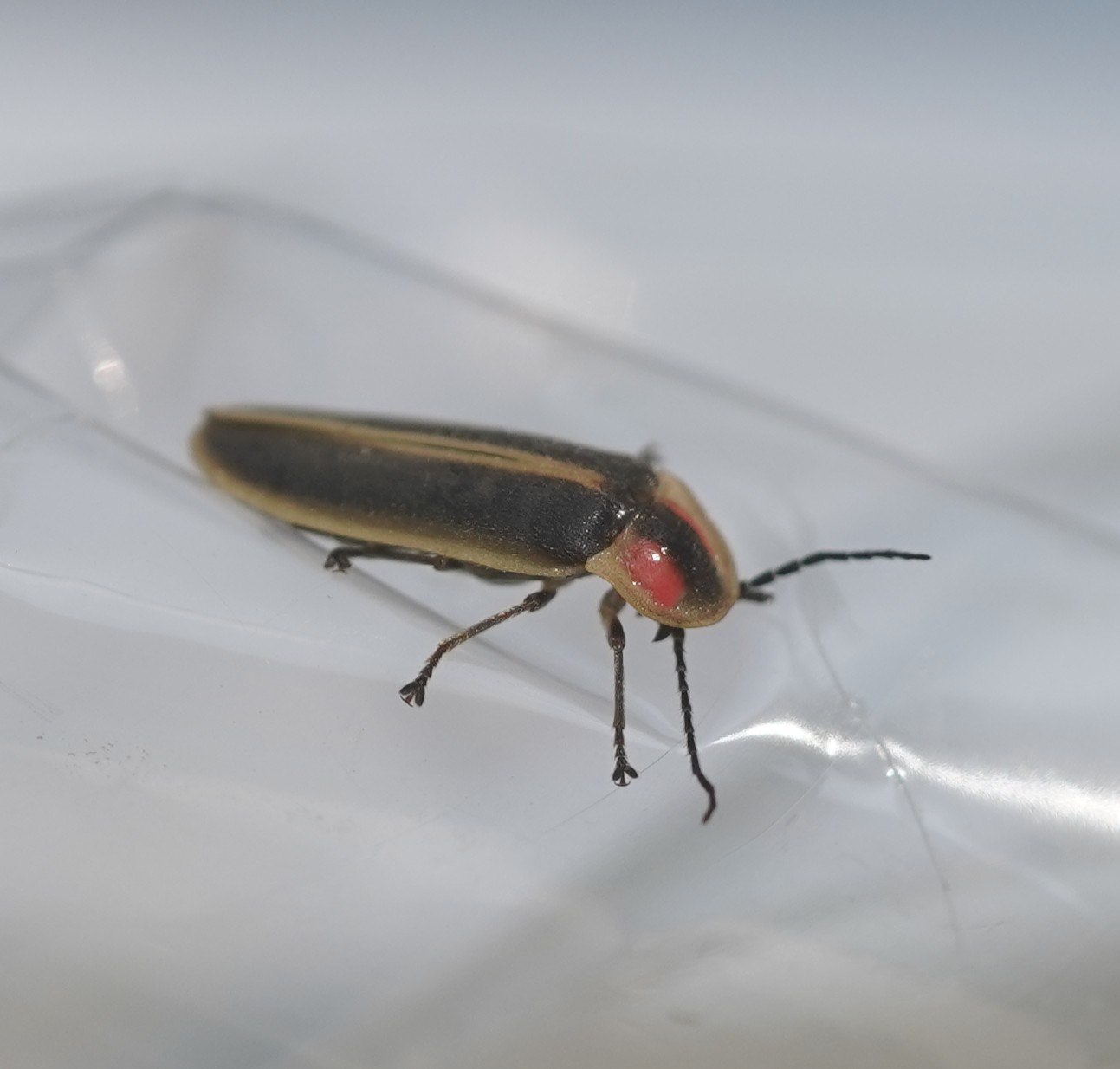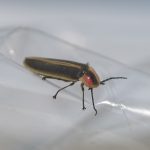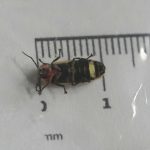Notice: Below is a list of 0 important links included on this page.
Please note that while screen readers have made significant strides, they may still lack full support for optimal web accessibility.





You must be logged in to post a comment.
This is a project of the Xerces Society, working in collaboration with the IUCN SSC Firefly Specialist Group and New Mexico BioPark Society.
Copyright © 2025 The Xerces Society •1631 NE Broadway Street, #821 • Portland OR 97232 USA
Nice observation of a female Photinus! Based on the region, dark scutellum, dark pygidium, and 10 mm length– there are 4 possibilities: P. ardens, P. consanguineus, P. consimilis, and P. obscurellus.
Based on the meadow habitat and the non-flared shape of the marking on the pronotum, P. consimilis does not seem right. So I would lean toward P. consanguineus (or something in that species group), but I am going to leave this at the genus level.